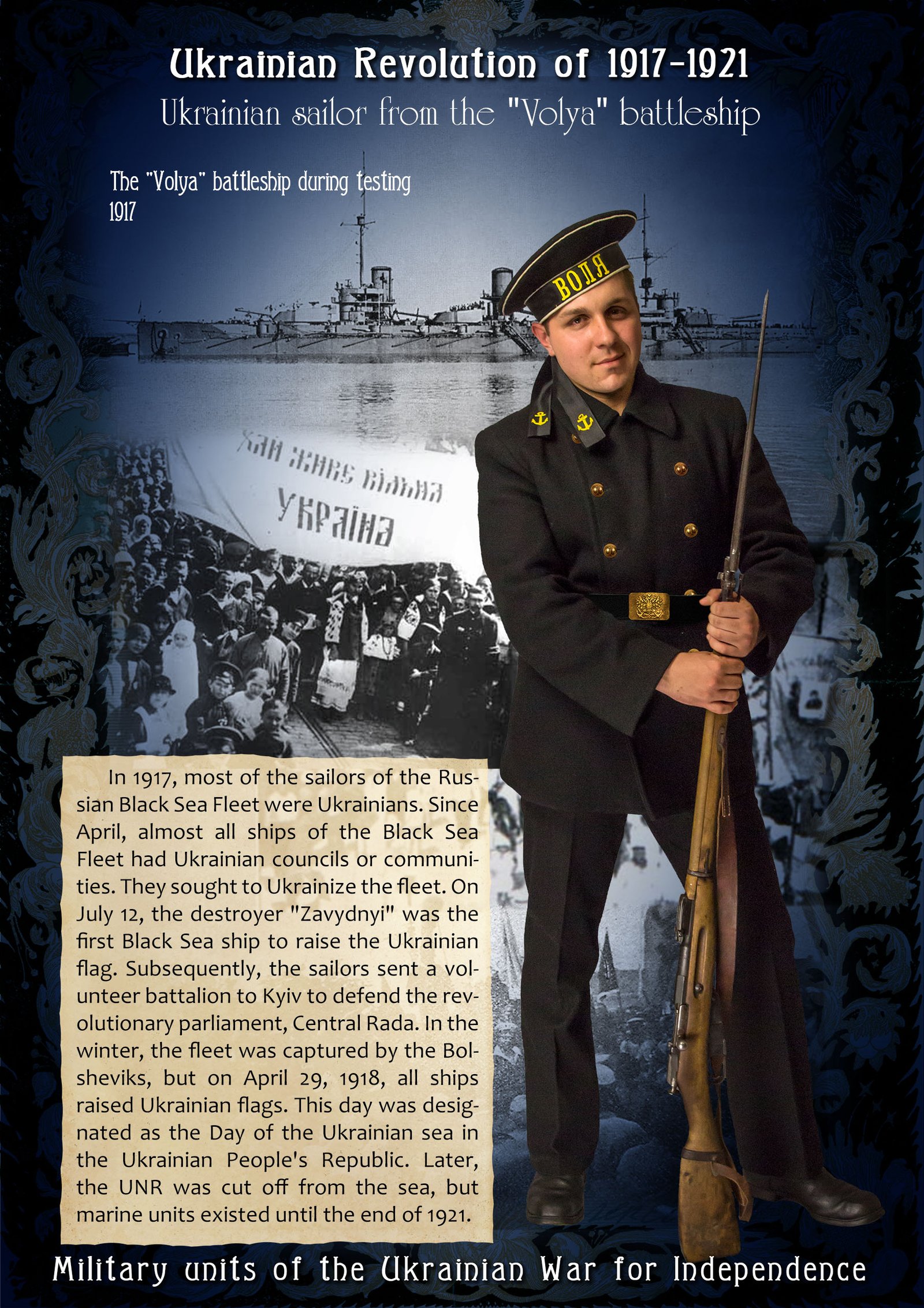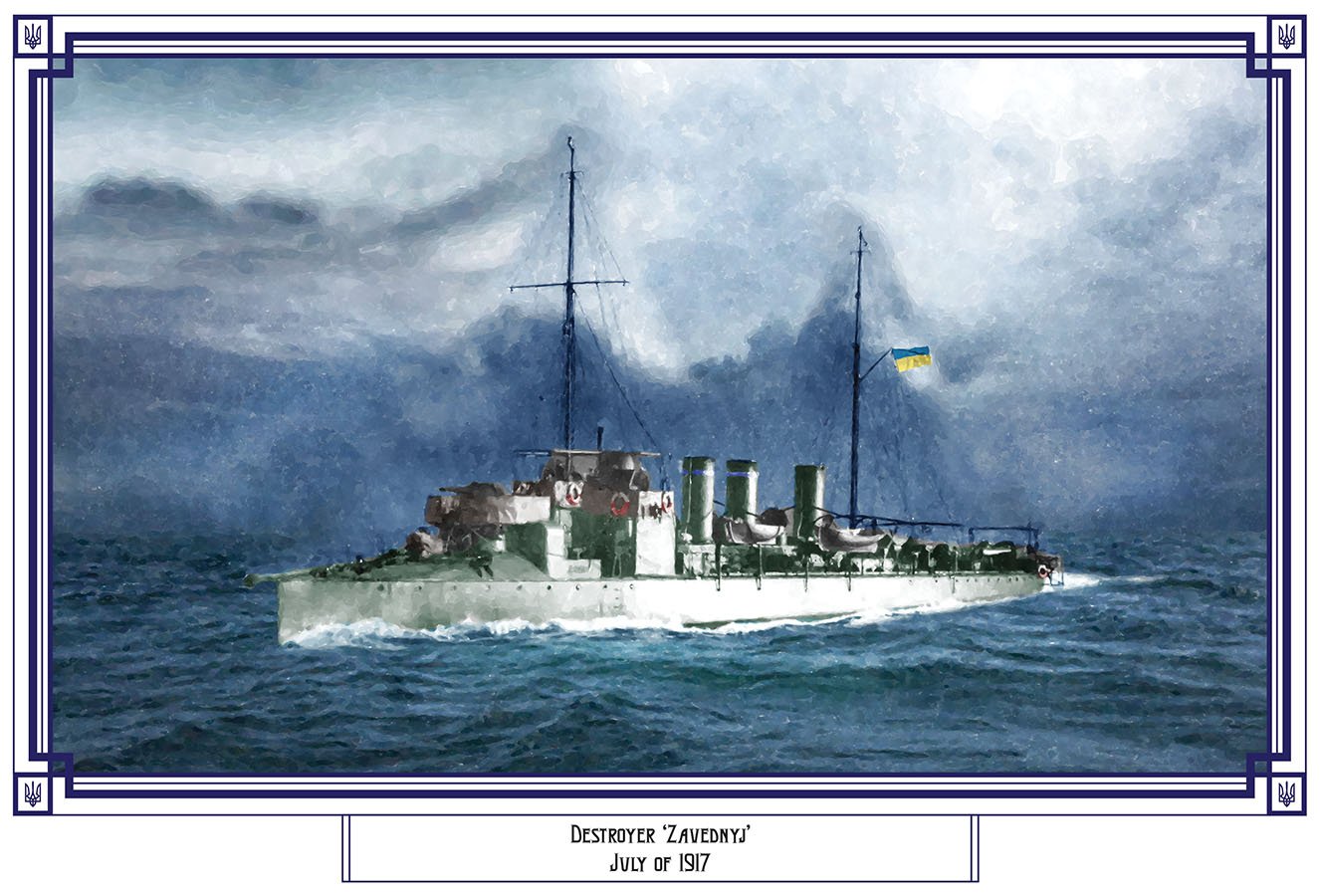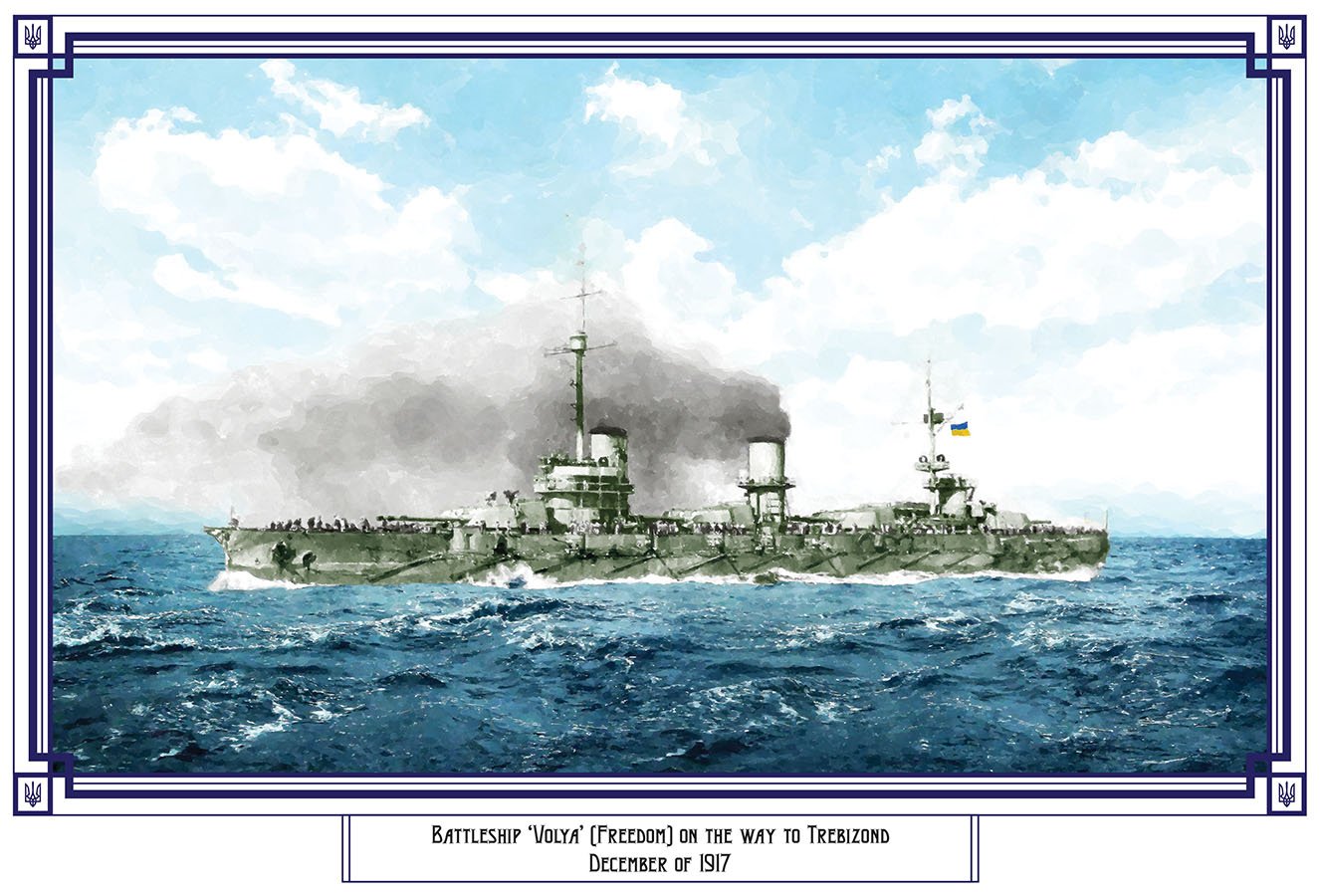For many Ukrainians, the sea has always been a symbol of freedom, and the hearts of sailors have always fought for our country.
Over the past year, Ukrainians have been focused on the events of the current war on land: fighting at the front, foreign aid. But a lot of interesting things have also happened at sea, and perhaps no less important...
It was the same in 1918. On April 29, the Central Rada in Kyiv adopted the Constitution of the Ukrainian People's Republic, and on the same day Pavlo Skoropadsky was proclaimed Hetman of Ukraine (as some say, a coup). A telegram from Sevastopol from the commander of the Black Sea Fleet, Admiral Sablin, went unnoticed in Kyiv, stating that the fleet had solemnly raised Ukrainian flags and passed into Kyiv's subordination.
And for good reason. This event was the culmination of a long struggle of sailors not only for the creation of the Ukrainian Navy, but also for the creation of our state.

During the existence of the Russian Empire, most of those who served on the Black Sea were Ukrainians, and even under the influence of the system, many of them did not lose their roots. After the abdication of the tsar in 1917, the Ukrainian movement in the navy and in Sevastopol was incredibly powerful. The sailors wanted to sail under the Ukrainian flag to defend the interests of their homeland. And they realized that this was impossible without Ukrainian statehood. Because the existence of the fleet requires not only large funds for its maintenance, but also an appropriate state policy. And its implementation, under the condition of autonomy, which the leaders of the Ukrainian movement in Kyiv were talking about at the time, was unrealistic.

And the sailors not only understood, they acted. The initial phase was the creation of Ukrainian organizations on ships. Then came the raising of Ukrainian flags. The first to do so in the summer of 1917 was the destroyer "Zavednyj". In November 1917, the entire fleet raised Ukrainian flags on the occasion of the adoption of the Third Universal by the Central Rada. But it was a bottom-up initiative; the fleet did not come under Kyiv's control. Having learned from newspapers about the plans of the Russian authorities to disperse the Central Rada by force, a marine battalion named after Hetman Sahaidachnyi was formed in Sevastopol, which later took part in the winter battles for Kyiv. The result was the intensification of Bolshevik propaganda: it was impossible to leave such an armed force to Ukrainians. In December 1917, the same thing happened that we saw in the spring of 2014. All the ships were captured by the Bolsheviks. But there was nowhere else to take sailors other than Ukrainians, and when the political situation changed, on April 29, 1918, the Black Sea Fleet raised Ukrainian flags.
Due to the change of power in Kyiv, at the most critical moment, our government failed to support the sailors, and all their achievements were lost. For the next six months, step by step, the Hetman's government sought to return the ships to Kyiv's control. But the events of the winter of 1918-1919 threw everything back again. In the spring of 1919, the Ukrainian government, which then realized the importance of port control for the struggle for independence, proclaimed April 29 a public holiday, the Day of the Ukrainian Sea. In the hope of regaining control of the Black Sea coast, marine units were created. They fought heroically during the liberation war, and were the last to leave the territory of Ukraine after the army's defeat, covering the retreat.

Until 1991, the Day of the Ukrainian Sea could only be celebrated outside our homeland.
Today, everything has changed. After 2014, the majority of Ukrainian citizens are no longer ashamed of those who have fought for centuries for its freedom. Today's sailors give their lives for our freedom. On the first day of the full-scale invasion, Marine Vitaliy Skakun blew up the Genichesk-Arabatska Strelka road bridge at the cost of his own life. There are many others like him. The sailors took part in the defense of Mariupol and are now fighting in the South.
But sailors have to take care of the sea, and they do. The ousting of the enemy fleet from the Black and Azov Seas, in addition to purely military benefits, opens up trade routes with the whole world. Today, it is clear that this is important not only for the functioning of the economy and filling the budget (which finances the Armed Forces), but also for normalizing relations with our neighbors, on whom we are critically dependent. In addition, the possibility of supplying weapons by sea means a completely different scale and speed, not to mention the cost of logistics.
To accomplish this task, it is necessary to destroy or shut down enemy ships in ports. Over the past two years, we have witnessed this gradual process. The successes of naval drone operators or successful missile attacks are particularly notable, but behind each operation is the enormous work of our weapons developers, intelligence officers, analysts, and hundreds of other specialists.
And they achieve the impossible. Take the destruction of the cruiser "Moskva" . One of three ships built in the USSR to destroy American aircraft carriers. Except for the nuclear-powered cruiser "Pyotr Veliky", these are the largest and most powerful ships in the Russian Navy.

The destruction of "Moskva" is:
1. For the first time since 1905, Russia lost its main class flagship in battle.
2. The "Moskva" is the largest ship that was destroyed by missiles.
3. The "Moskva" is the largest ship that Russia has lost in combat since World War II.
4. The last time a ship of this class was lost by Argentina in 1982 during the Falklands War.
5. The cost of the funds allocated by the Americans for the potential destruction of such a ship in the event of a conflict far exceeds the cost of the Ukrainian weapons used.
6. The loss of the "pride of the fleet" called " Moskva" had a significant psychological impact on the enemy army and society.
In addition, the destruction of the "Moskva" proved that Ukrainians can not only fight bravely against Russian tanks, but also destroy the most powerful weapons using high-tech methods. This undoubtedly influenced the provision of other high-tech weapons to us.
And this is just one episode of the struggle at sea.
Now it is as if the water element itself has decided to take revenge on the Russians, and in the distant rear it is turning the occupiers' homes into the bottom of the sea.
Perhaps someday the city of Moscow will follow the cruiser, swept away not by the figurative waves stirred up by the current war, but by the real waters of the world's oceans. It would be fair.

After all, as the old sailors used to say: the sea is a faithful ally, lending its strength and resources to those who seek help.
P.S. If you haven't seen the film "Neptune's Trident" yet, it's time to watch it.
In Ukrainian:
With English subtitles:

